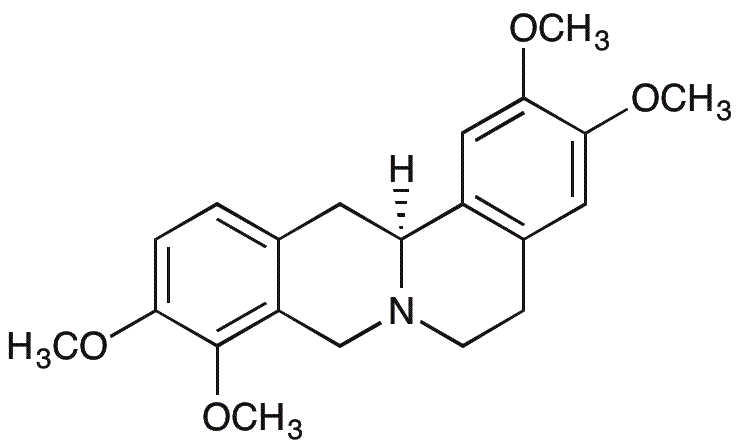(-)-Tetrahydropalmatine is widely utilized in research focused on
- Pharmaceutical Development: This compound is known for its potential analgesic and sedative properties, making it a candidate for developing pain relief medications.
- Traditional Medicine: Often used in herbal remedies, it is valued in practices such as Traditional Chinese Medicine for its calming effects, which can help manage anxiety and sleep disorders.
- Neuroscience Research: Researchers explore its effects on neurotransmitter systems, particularly dopamine, which may lead to insights into treating conditions like Parkinson’s disease.
- Natural Product Synthesis: It serves as a precursor in synthesizing other bioactive compounds, enhancing the efficiency of creating new therapeutic agents.
- Complementary Therapies: The compound is being studied for its role in integrative health approaches, potentially offering benefits alongside conventional treatments for various ailments.
General Information
Properties
Safety and Regulations
Applications
(-)-Tetrahydropalmatine is widely utilized in research focused on
- Pharmaceutical Development: This compound is known for its potential analgesic and sedative properties, making it a candidate for developing pain relief medications.
- Traditional Medicine: Often used in herbal remedies, it is valued in practices such as Traditional Chinese Medicine for its calming effects, which can help manage anxiety and sleep disorders.
- Neuroscience Research: Researchers explore its effects on neurotransmitter systems, particularly dopamine, which may lead to insights into treating conditions like Parkinson’s disease.
- Natural Product Synthesis: It serves as a precursor in synthesizing other bioactive compounds, enhancing the efficiency of creating new therapeutic agents.
- Complementary Therapies: The compound is being studied for its role in integrative health approaches, potentially offering benefits alongside conventional treatments for various ailments.
Documents
Safety Data Sheets (SDS)
The SDS provides comprehensive safety information on handling, storage, and disposal of the product.
Product Specification (PS)
The PS provides a comprehensive breakdown of the product’s properties, including chemical composition, physical state, purity, and storage requirements. It also details acceptable quality ranges and the product's intended applications.
Certificates of Analysis (COA)
Search for Certificates of Analysis (COA) by entering the products Lot Number. Lot and Batch Numbers can be found on a product’s label following the words ‘Lot’ or ‘Batch’.
*Catalog Number
*Lot Number
Certificates Of Origin (COO)
This COO confirms the country where the product was manufactured, and also details the materials and components used in it and whether it is derived from natural, synthetic, or other specific sources. This certificate may be required for customs, trade, and regulatory compliance.
*Catalog Number
*Lot Number
Safety Data Sheets (SDS)
The SDS provides comprehensive safety information on handling, storage, and disposal of the product.
DownloadProduct Specification (PS)
The PS provides a comprehensive breakdown of the product’s properties, including chemical composition, physical state, purity, and storage requirements. It also details acceptable quality ranges and the product's intended applications.
DownloadCertificates of Analysis (COA)
Search for Certificates of Analysis (COA) by entering the products Lot Number. Lot and Batch Numbers can be found on a product’s label following the words ‘Lot’ or ‘Batch’.
*Catalog Number
*Lot Number
Certificates Of Origin (COO)
This COO confirms the country where the product was manufactured, and also details the materials and components used in it and whether it is derived from natural, synthetic, or other specific sources. This certificate may be required for customs, trade, and regulatory compliance.


